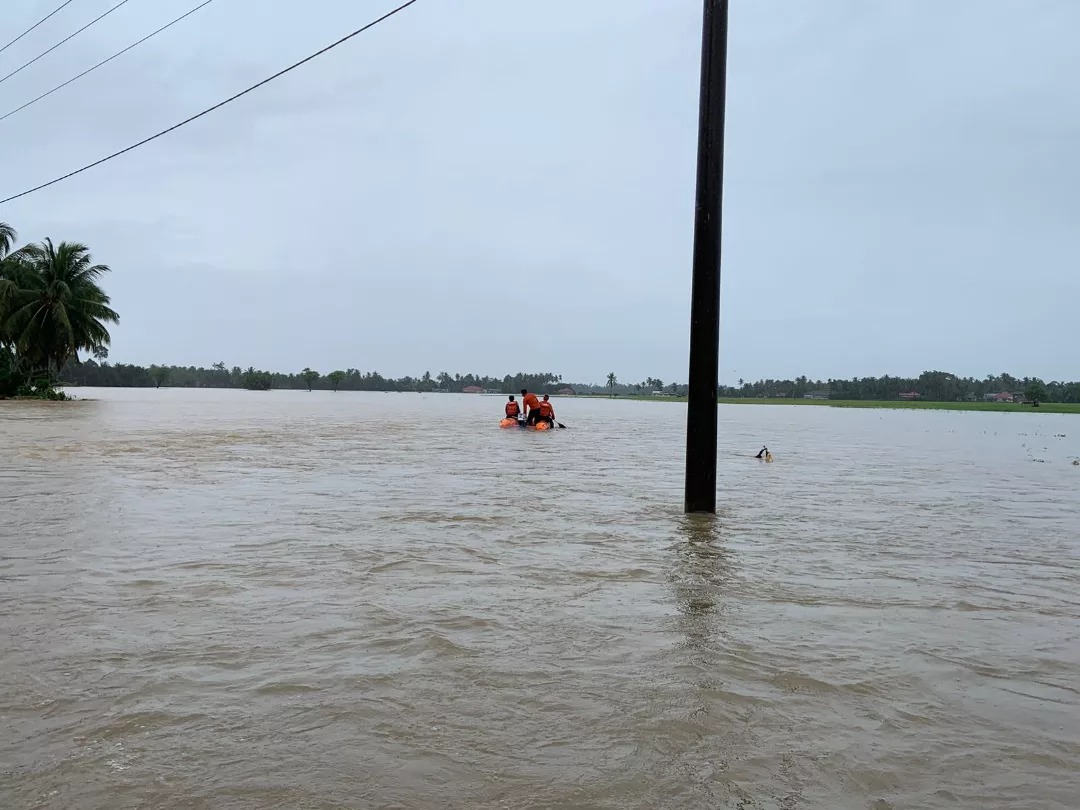What we’re watching: Weekly disaster update, March 11

We know all too well that disaster can strike anytime, anywhere in the world. Some disasters make headlines; others do not. Here at the Center for Disaster Philanthropy (CDP), we monitor the status of disasters worldwide and compile a list of the ones we’re tracking weekly, along with relevant disaster-related media coverage.
Here’s what we’re watching for the week of March 11, 2024.
New or Emerging Disasters
Avalanches – India: On March 5, two people were killed after avalanches hit the state of Himachal Pradesh in India. The districts of Lahaul and Spiti experienced the worst weather conditions, resulting in over 650 roadblocks and power outages for more than 60 hours. Stranded tourists, as many as 81, were moved to more secure locations.
The districts saw four avalanches days before the deadly avalanche on March 5, one of which triggered a flood alert after blocking the flow of the Chenab River. According to the Meteorological Centre in the state capital, Shimla, western disturbances from the Arabian and Caspian Seas will likely affect weather conditions in the coming days and trigger more thunderstorms, rain and heavy snowfall.
Lahaul and Spiti recorded more than 131 centimeters (52 inches) of snowfall and rain between March 1-3, a 530% increase from the average 20.8 centimeters (8 inches).
Complex Humanitarian Emergency – Mozambique: According to the United Nations International Organization for Migration (IOM), at least 110,000 people have been displaced in Mozambique since January 2024 due to a surge in violence by non-state armed groups. Almost 60% of those displaced by the new wave of attacks are children, with Save the Children calling this the largest displacement in northern Mozambique in 18 months.
On March 6, aid agencies reported new attacks in the Cabo Delgado province, which left 70 children missing, with fears they may have drowned or been kidnapped by militants. The United Nations refugee chief raised alerts on March 7 due to the increased displacement of people following a seven-year insurgency by armed groups in north Mozambique.
Flooding – Iran: Persistent heavy rain since Feb. 27 led to the overflow of four dams in Iran’s Sistan and Baluchistan provinces, affecting over 110,000 people in the southern region. Across 14 cities and 450 villages, 500 houses and 18,000 hectares (44,500 acres) of agricultural land were damaged. There were power outages in at least two-thirds of the affected areas.
The Sistan and Baluchistan meteorological department issued an orange warning due to forecasts of heavy showers and thunderstorms for March 6-7.
Although official statistics report no deaths, local sources in Baluchistan say at least five had died due to the floods.
Heavy rainfall – Indonesia: Days of heavy rain caused flooding and landslides in Indonesia’s West Sumatra, killing at least 26. Since March 7, nearly 37,000 houses and buildings have been submerged, and 113 hectares (280 acres) of farmland and multiple bridges and schools have been damaged.
Indonesia’s government drafted 150 personnel from various disaster agencies to engage in search and rescue efforts, evacuation assistance and relief services. However, extreme weather has hampered rescue operations. As of March 11, over 70,000 people were forced to evacuate.
Previous/Ongoing Disasters
Flooding – Brazil: Since Feb. 27, heavy rainfall has caused flooding and overflow of rivers in western Brazil. As of March 7, the government reported more than 28,855 people displaced due to flooding and 19,694 people affected due to the overflow of the Jurua River. A state of emergency remains for 19 municipalities as more rainfall and thunderstorms are forecasted.
In addition to the disasters listed above, we actively monitor the following disasters or humanitarian emergencies. For more information, see the relevant disaster profiles, which are updated regularly.
- Afghanistan Humanitarian Crisis
- Horn of Africa Hunger Crisis
- Palestinian-Israeli Humanitarian Crisis
- 2024 Chile Wildfires
- 2024 Japan Earthquake
- 2024 U.S. Tornadoes
- 2024 North American Wildfires
- 2023 Libya Floods
- 2023 Morocco Earthquake
- 2023 Turkey-Syria Earthquake
U.S. Midwest Low-Attention Disasters
The Midwest is regularly faced with low-attention disasters that affect people across the region. CDP’s Midwest Early Recovery Fund (ERF) effectively funds efforts that catalyze equitable disaster recovery.
These are some of the latest disasters and related news the ERF team is monitoring:
- Several wildfires erupted across Kansas on Feb. 26, destroying homes and injuring people. Fires in Kearney and Seward County caused damage to six homes, leaving families displaced. Kansas Governor issued a state of disaster emergency declaration due to increased fire risks this week.
- Crews battled a large wildfire near Waseca, Minnesota, on Sunday, March 3, which quickly grew to 2,000 acres. Twelve houses were evacuated, and one civilian and two firefighters were injured, and smoke from the fire affected air quality in the Twin Cities. Burning restrictions are in place for southwest Minnesota.
- On Feb. 27, a prairie fire in central Nebraska burned 110 square miles, destroying one home, damaging another and burning down five outbuildings. No injuries have been reported. Governor Jim Pillen declared a state of emergency to provide additional aid from the state and cooperating agencies.
Complex Humanitarian Emergencies – Democratic Republic of Congo
Many places worldwide are experiencing emergencies caused by conflict, climate change, drought, famine, economic challenges and other conditions that combine to create a complex humanitarian emergency (CHE). CDP maintains complete profiles on several CHEs, and what CDP considers Level 1 CHEs are profiled in this weekly blog post and tracked.
Democratic Republic of Congo (DRC) is facing a humanitarian crisis due to intensified heavy fighting between the Congolese army and M23 rebels, disasters, and frequent outbreaks of infectious diseases. In 2024, more than 25.4 million people, a quarter of the population, will need humanitarian assistance, according to the newly released Humanitarian Response Plan (HRP).
Violence has been on the rise in eastern parts of DRC, and most recently, armed rebels ambushed and killed 15 people in the Ituri province on Feb. 17. Another targeted attack on a hospital left an 80-year-old patient dead on March 6. Ongoing heightened insecurity forced 10 humanitarian aid organizations to minimize their presence in the area and temporarily halt all non-life-saving activities.
Almost 215,000 people have fled their homes since the start of the year due to the new wave of fighting between the M23 rebel group and the Congolese army. DRC has the second-highest number of internally displaced people globally, at approximately 6.2 million.
This comes at a time when political tensions are simmering between Rwanda and the DRC, the United Nations peacekeeping mission, MONUSCO, is set to complete its withdrawal from the country this year, and communities are still homeless from floods in December 2023 that displaced around 500,000 people.
Join us this Thursday, March 14
Webinar: From pets to heroes: The role of animals in disaster response and recovery

What We’re Reading
- I Said the Era of Famines Might Be Ending. I Was Wrong. – The New York Times: An opinion piece by Alex de Waal at Tufts University delves into current famines that threaten dozens of countries and what humanitarian aid agencies, funders and policymakers must do to ensure appropriate and immediate action.
- One of the world’s most populated cities in nearly out of water as many go “days if not weeks” without it – CBS: Mexico City has been facing diminishing water supplies for months. With a population of nearly 22 million people, officials fear the “day zero” – when there’s no longer enough water for residents – could come on June 26, 2024, and last for several months.
- The clock is ticking to build guardrails into humanitarian AI – The New Humanitarian: Humanitarian agencies have yet to establish policies related to artificial intelligence (AI) use and how it relates to data governance, thus risking their core values. This piece calls on guardrails for the use of AI before widespread adoption leads to irreversible consequences.
- The Texas Panhandle Wildfires and Four Keys for Equitable Recovery – Urban Institute: Read the Urban Institute’s analysis of the Texas fires and four takeaways focused on housing, language barriers and aid inaccessibility, health burdens, and economic recovery that need to be addressed as part of an equitable recovery.
- Why Are Hundreds Of Lahaina Fire Survivors Turning Down FEMA Housing? Because It’s Not In West Maui – Honolulu Civil Beat: The Federal Emergency Management Agency (FEMA) has secured almost 1,500 properties for long-term housing of the Aug. 8, 2023 fire victims. Only one-third of them are in West Maui. Additional rules governing federal housing, such as separate rooms for children of different genders, exacerbate the current housing crisis.
Take a midday break! Check out The New York Times crossword of the day.
